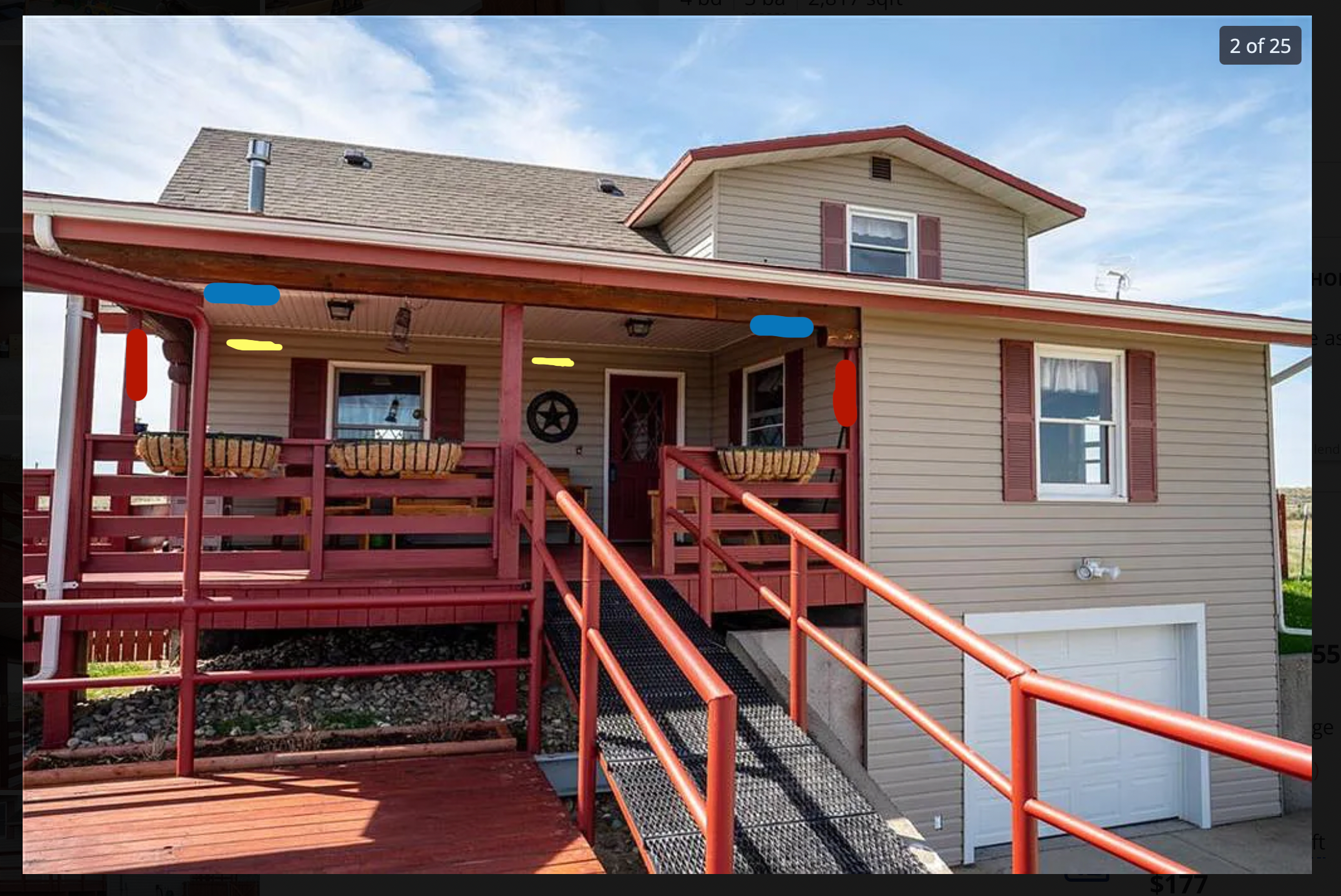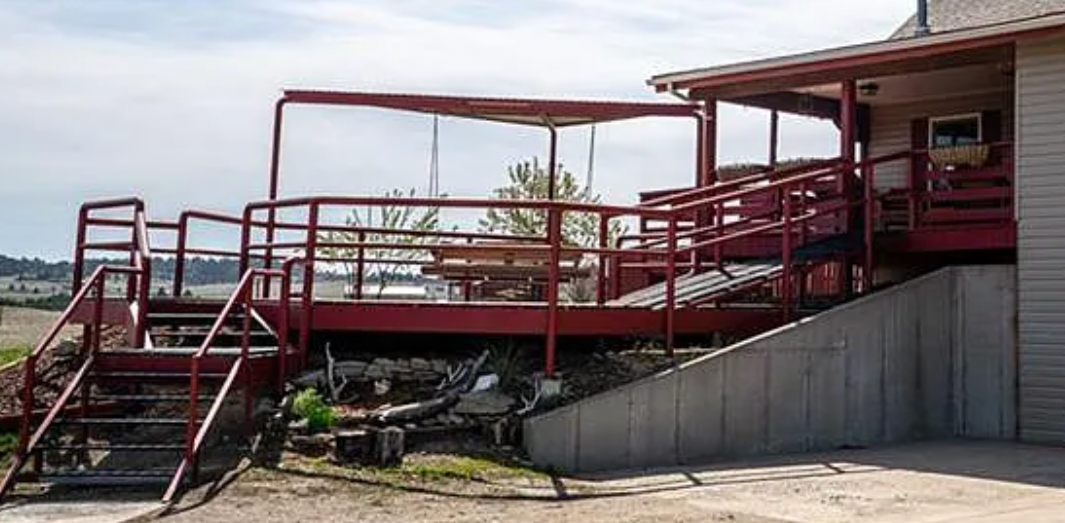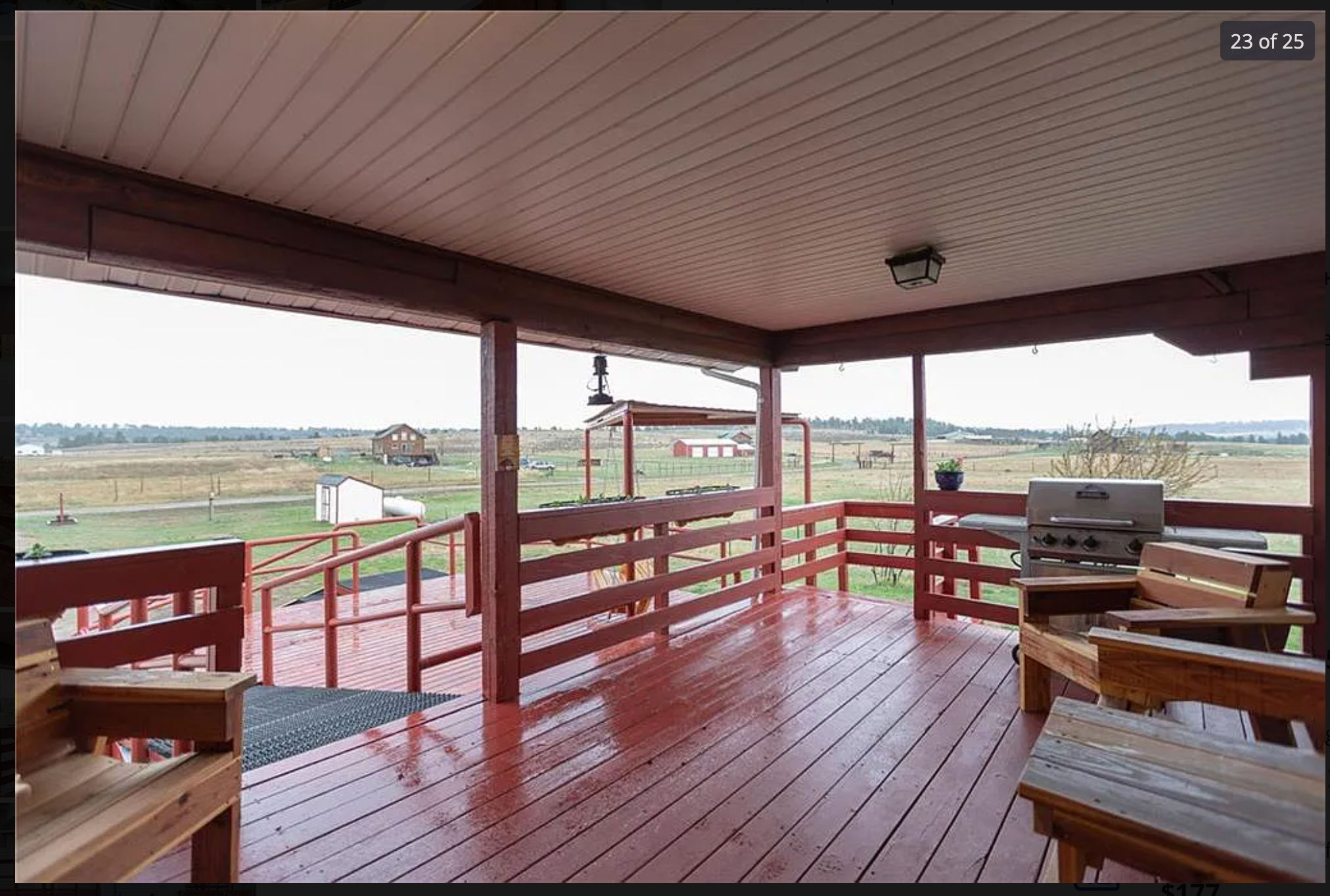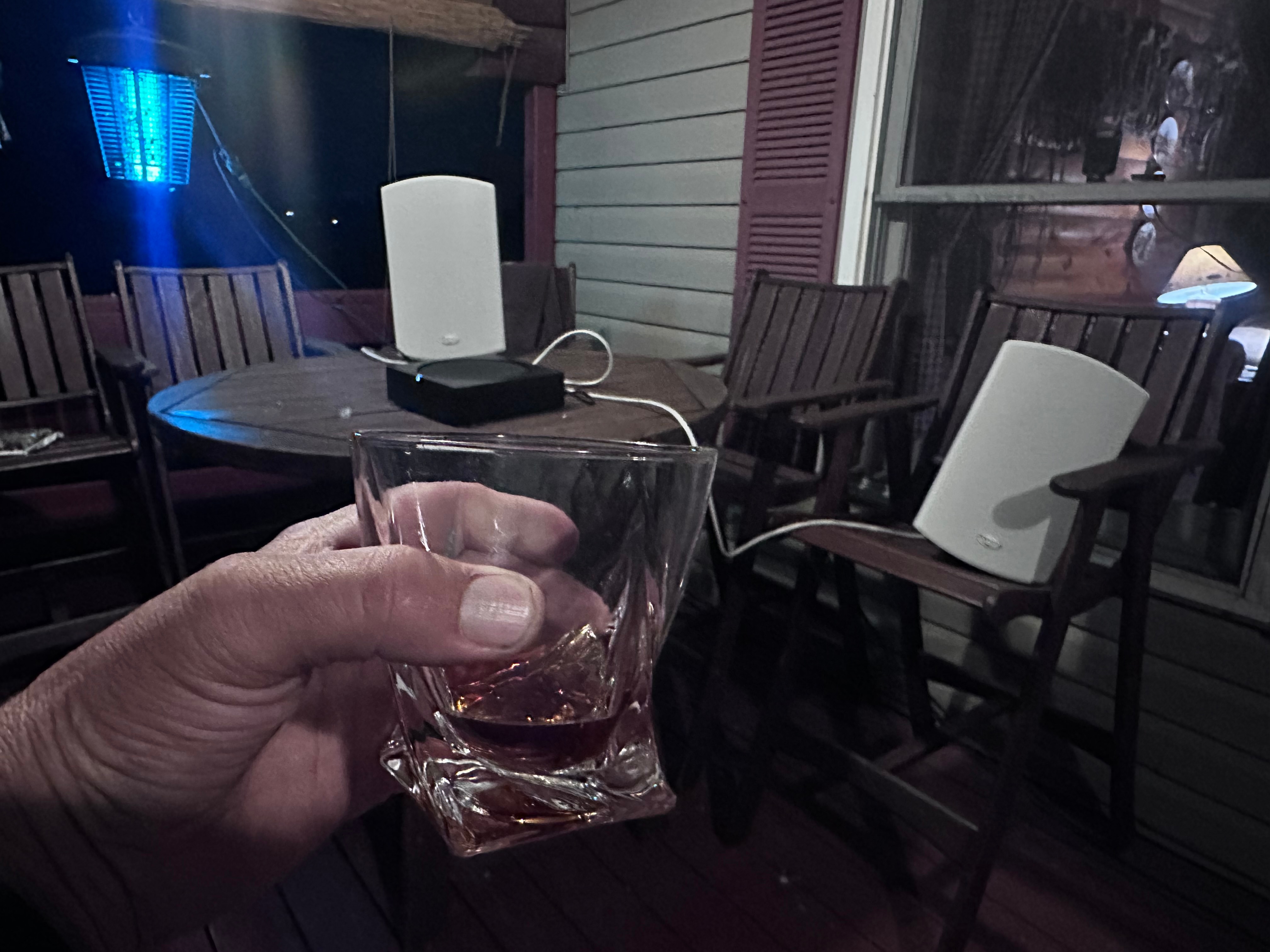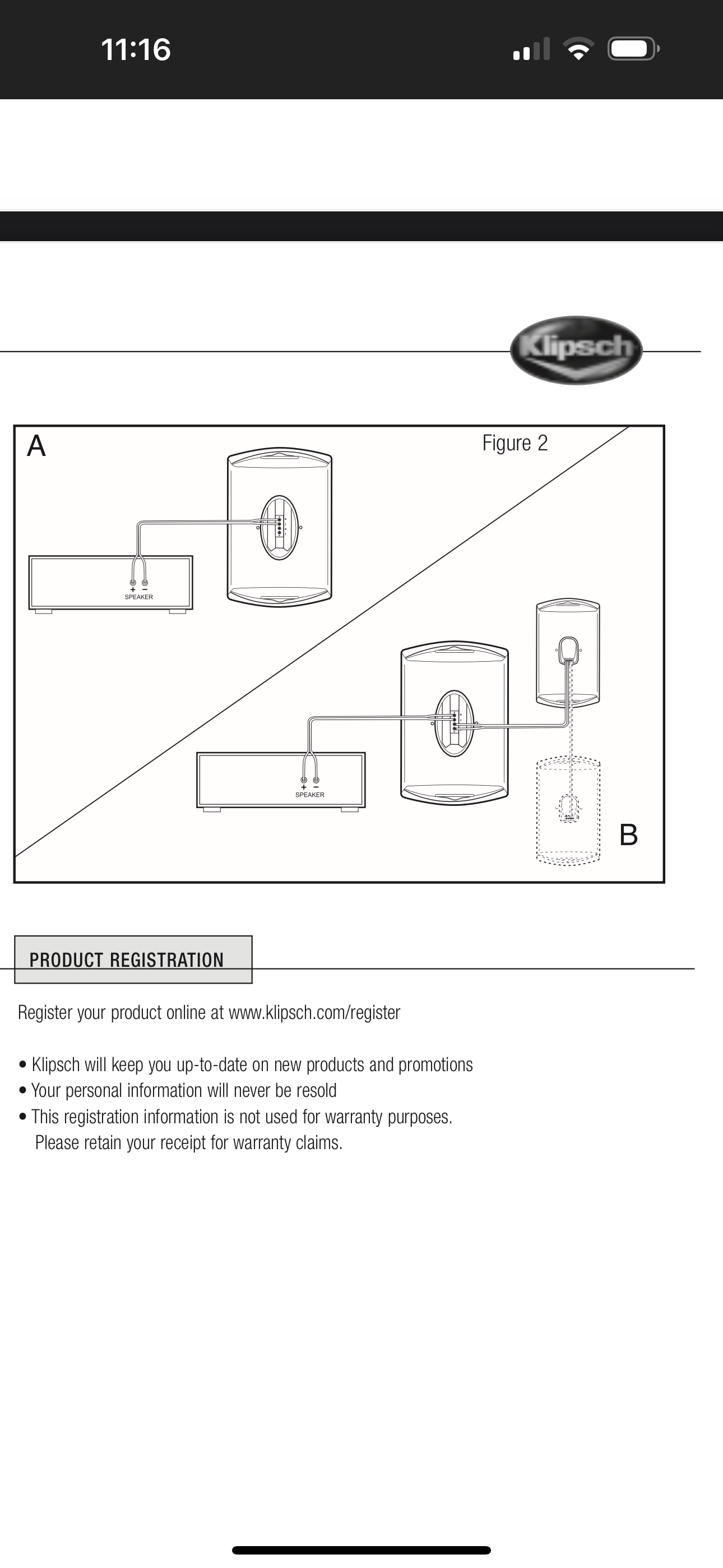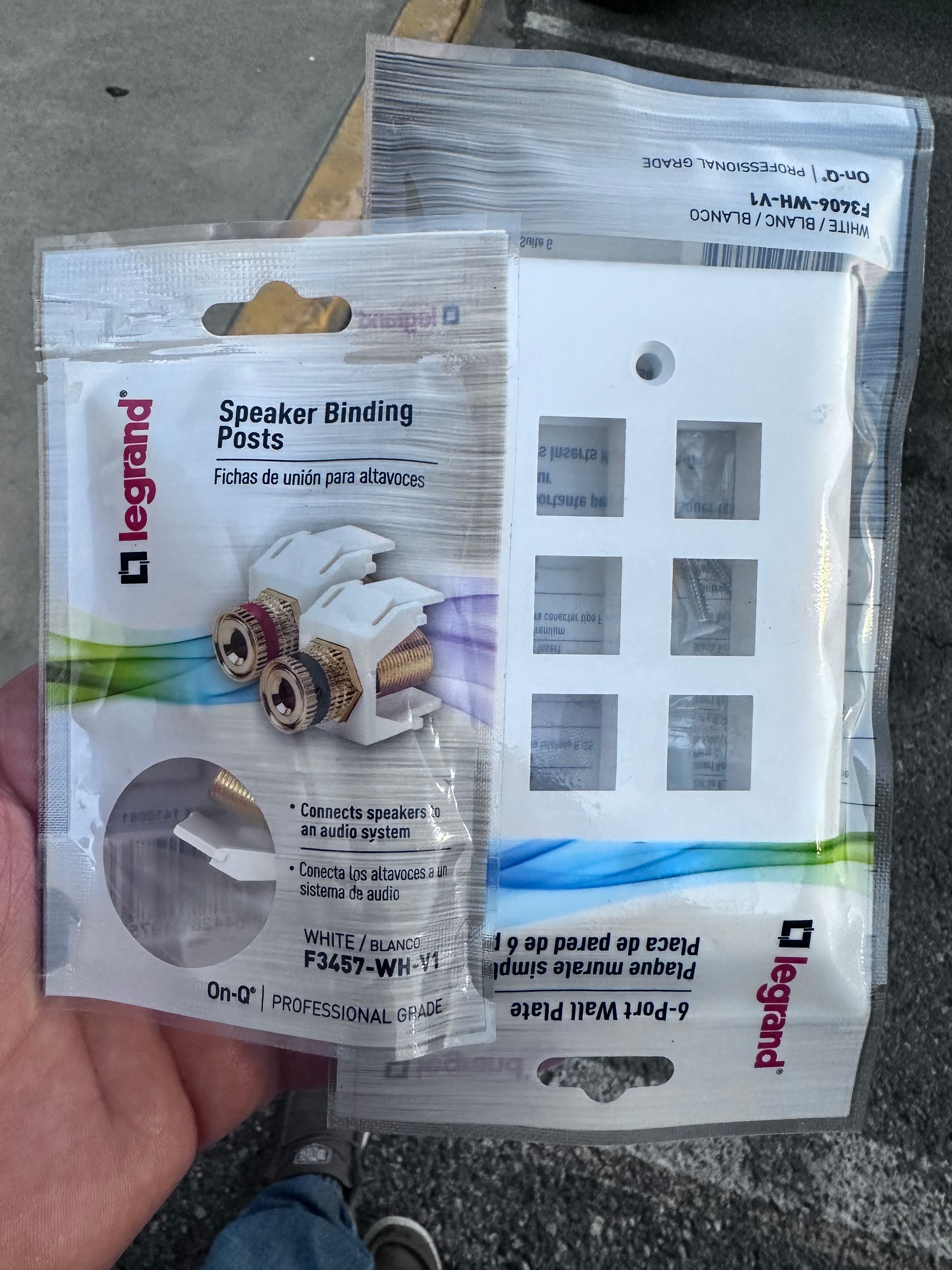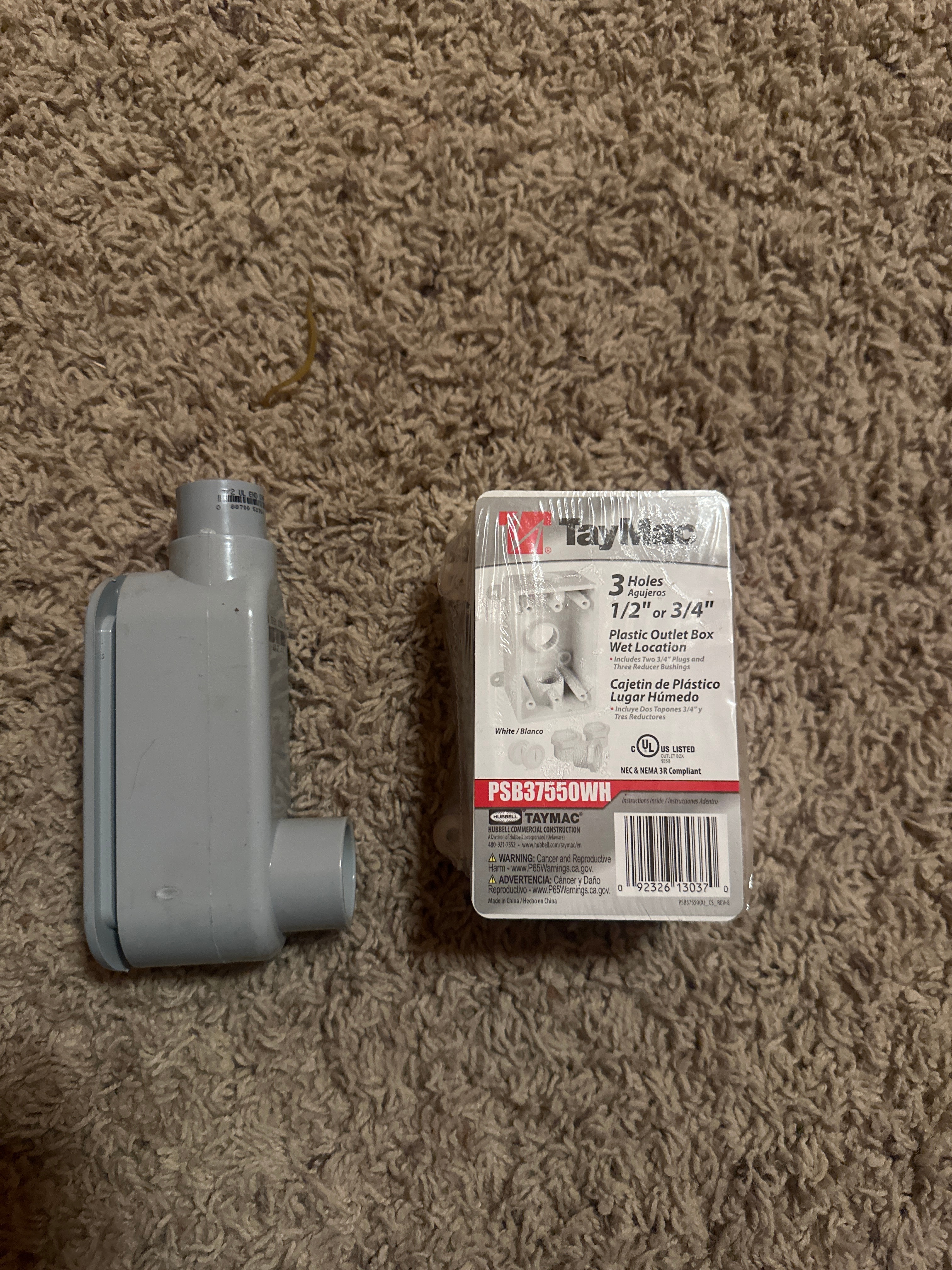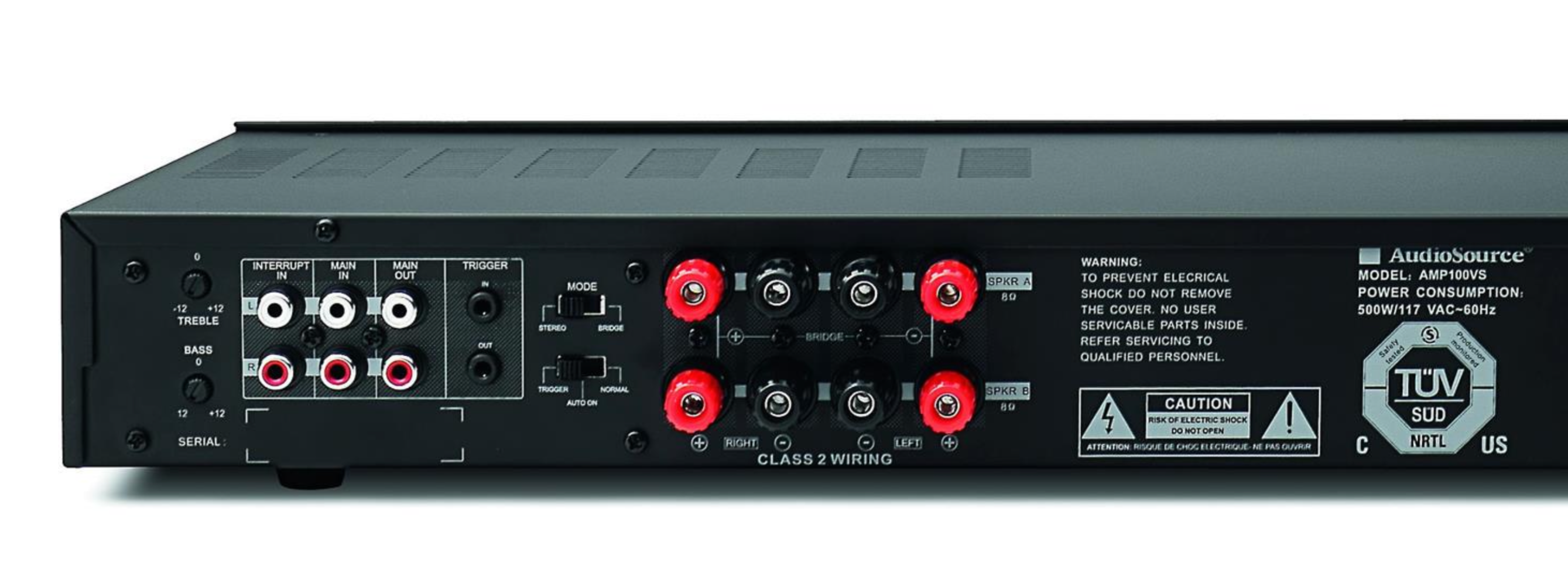So, I am attaching some screenshots of the outside of our house. We spend most of the time under the over hang on the upper porch, where I use the Blackstone, but out in front too on the lower porch. I am wondering where would be the best place to put a pair of Klipsch aw650 speakers, I am running them to the inside of the house where we are putting a Sonos amp. I was thinking under the edge of the over hang and pointed to the lower porch, either in an upright position angled in from the corner uprights. Or was thinking directly down from the crossbeam. I could attach them to the house against the wall under the upper over hang, but not sure how the sound would project across the area.
I am worried about not getting enough sound under the overhang if positioned on the uprights or front beam on the overhang but also worried about projecting sound across from the far wall. Any suggestions? The first picture I put colored lines in the 3 different arrangements I had in mind, the other pics are for reference to the area.
